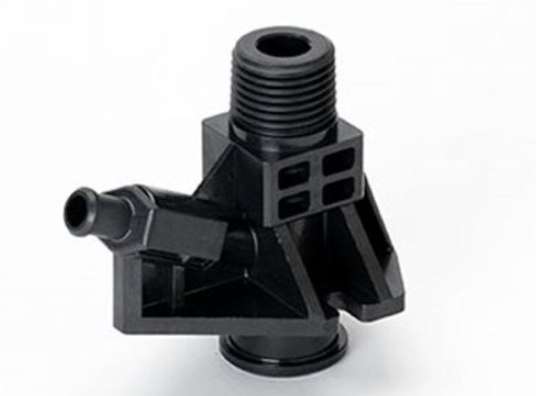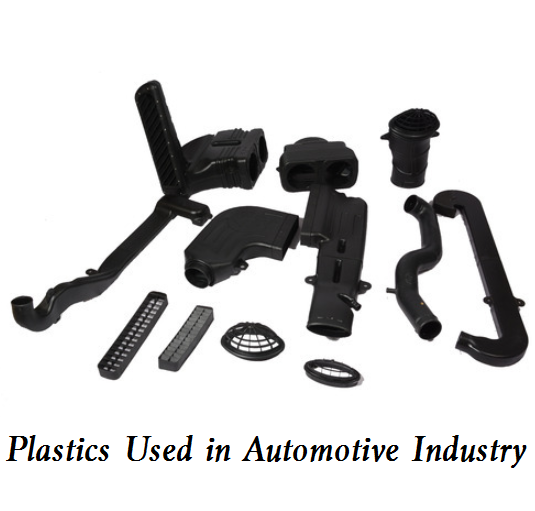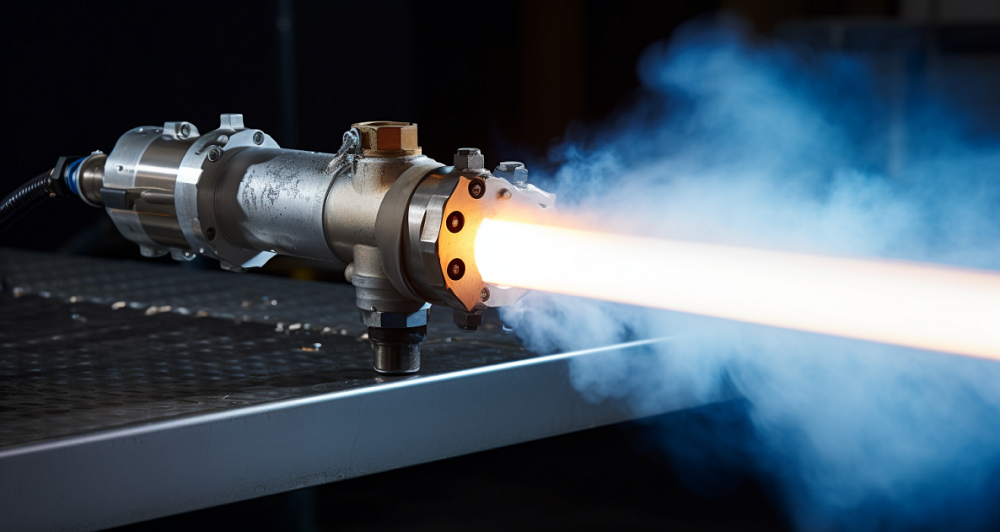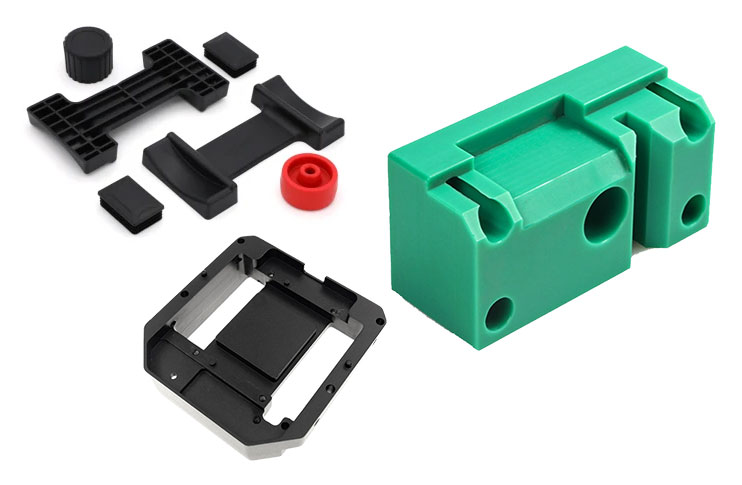- Home
- Machining techniques
- CNC Machining Services
- Cooperative supply services
- Designs
- Materials
- Finishing Services
- Shop
- Products
- Guide
- About Us
- Contact Us
2023.1.18
According to the use temperature, plastics can be divided into general plastics, engineering plastics, and high-temperature engineering plastics. The high-temperature engineering plastics can be used in environments above 150 ℃. This kind of material has high heat resistance and flame resistance, as well as excellent mechanical performance, aging resistance, dimensional stability, and electrical properties. Let’s take a look at 8 types of high-temp engineering plastics.

1) High-temperature nylon
– PA46: The aliphatic polyamide formed by condensation of butylene diamine and adipic acid has more amides on each given length chain of PA46 and a more symmetrical chain structure than PA6 and PA66, which makes its crystallinity up to 70% and gives it a very fast crystallization rate. The melting point of PA46 is 295 ℃, the HDT (thermal deformation temperature) of unreinforced PA46 is 160 ℃, and the HDT can be as high as 290 ℃ after glass fiber reinforcement, and the long-term service temperature is also 163 ℃. The unique structure of PA46 endows other materials with unique properties that cannot be achieved PA46 is mainly used in electronics, aerospace, and automobile.
– PPA: It is formed by condensation of dibasic acid containing benzene ring and aliphatic diamine, its melting point is between 310-325 ℃, and its thermal deformation temperature is between 280-290 ℃. The main varieties are PA4T, PA6T, PA9T, PA10T, etc. Compared with ordinary PA66, the water absorption of PPA is very low. Even if it is soaked in cold water for several years, its tensile strength can maintain more than 80%, and the oil resistance of PPA is very good. Even at high temperatures, it also has high resistance to lubricating oil and fuel oil. PPA also has excellent dimensional stability and weather resistance. It is often used in the fields of automobiles, electrical appliances and electronics, the machinery industry, and daily necessities.
– PARA: It was invented by DuPont, and the most famous ones are Nomex and Kevlar. This kind of material is mainly used to prepare high-performance fibers and sheets. The fibers made have the characteristics of high strength, high rigidity, high modulus, high heat resistance, and high dielectric strength. It can be applied to super-strength fiber and reinforcement materials, and structural components such as military, aviation, and aerospace.
2) Polyphenylene sulfide (PPS)
Polyphenylene sulfide (PPS) is a special engineering plastic with the fastest development and largest consumption in recent years. PPS has the advantages of excellent heat resistance, chemical resistance, weather resistance, flame retardancy, electrical performance, and good dimensional stability. It is widely used in automobile, electronic and electrical, mechanical industry, petrochemical industry, pharmaceutical industry, light industry, military industry, aerospace, 5G communication, and other fields, and is the most widely used special engineering plastic.
3) Polyaryletherketone (PAEK)
– PEEK: a special engineering plastic with excellent comprehensive properties. It has excellent heat resistance, water resistance, solvent resistance, and electrical insulation; High fatigue strength; Radioactive resistance is the best of all plastics; The oxygen index is high, and the smoke generated during combustion is small and non-toxic.
– PEK: Because the ratio of ether bond and ketone group in its molecular structure is lower than PEEK, its melting point and glass transition temperature are higher than PEEK, its heat resistance is better than PEEK, and its continuous use temperature is 250 ℃.
– PEKK: It is a high-performance material. This material has a high melting point, about 300 ℃ to 600 ℃, and has strong chemical resistance and wear resistance. In recent years, PEKK has made rapid progress in the application of 3D printing and has better performance than traditional 3D printing materials.
4) Polyimide (PI)
Polyimide (PI) is an aromatic heterocyclic polymer compound whose molecular structure contains imide group links. It is one of the most heat-resistant varieties in engineering plastics at present. It can withstand extreme temperatures, thermal decomposition temperatures up to 600 ℃, and will not crack in liquid helium at – 269 ℃. In addition, it has excellent mechanical properties, acid and alkali resistance, biocompatibility, and electrical properties. Polyimide engineering plastics can be divided into thermosetting and thermoplastics, including polymellitimide (PMMI), polyetherimide (PEI), polyamide-imide (PAI), etc., which have their own applications in different fields.
– PMMI has a thermal deformation temperature of 360 ℃ under a load of 1.8 MPa and has excellent electrical performance. It can be used for precision parts under special conditions, high-temperature self-lubricating bearings, sealing rings, blower impellers, etc., as well as valve parts in contact with liquid ammonia, and parts of the fuel supply system of jet engines.
– PEI has excellent mechanical properties, electrical insulation properties, radiation resistance, high-temperature resistance and wear resistance, good melt fluidity, molding shrinkage of 0.5%~0.7%, can be used for injection and extrusion molding, easy post-processing, and can also be combined with other materials by welding, and has been widely used in electronics, aviation, automobile, medical equipment, and other industries.
– The strength of PAI is the highest among non-reinforced plastics at present, with a tensile strength of 190MPa, bending strength of 250MPa, and thermal deformation temperature of 274 ℃ under 1.8MPa load. PAI has good ablation resistance and electromagnetic properties at high temperatures and high frequencies. It has good adhesion performance to metals and other materials. It is mainly used for gears, bearings, copier separation claws, etc. It can also be used for aircraft ablation materials, magnetic permeability materials, and structural materials.
5) Polysulfone (PSU)
PSU is a slightly amber, amorphous transparent, or translucent polymer. Its outstanding advantages are excellent mechanical properties, high rigidity, wear resistance, high strength, and excellent mechanical properties even at high temperatures; Its range is – 100~150 ℃, the long-term use temperature is 160 ℃, and the short-term use temperature is 190 ℃. Polysulfone includes common bisphenol A PSU (commonly known as PSU), polyphenylsulfone, and polyethersulfone.
6) Polyaryl ester (PAR)
Polyaryl ester (PAR) is a thermoplastic resin with a benzene ring and ester bond in the main chain. PAR has good light transmittance (close to 90%), toughness, heat resistance, elastic recovery, weather resistance, and flame retardancy, and the maximum continuous use temperature is 170 ℃. It is mainly used for precision devices, automobiles, medical treatment, food, and daily necessities.
7) Liquid crystal polymer (LCP)
The Chinese name of LCP is liquid crystal compound. The so-called “liquid crystal” is a substance that not only has the fluidity of liquid in the molten state but also maintains the orderly arrangement of crystal molecules. The mechanical properties of LCP are excellent. The biggest feature is that the relative strength increases with the thinning of the wall thickness. LCP has good thermal performance, and its continuous use temperature can reach 200 ℃ – 300 ℃.
8) Fluoroplastics
Fluoroplastic refers to plastic made of fluororesin. The main varieties include polytetrafluoroethylene (PTFE), tetrafluoroethylene-ethylene copolymer (ETFE), polytetrafluoroethylene propylene (FEP), polyvinylidene fluoride (PVDF), etc. The service temperature is between 150 ℃ and 260 ℃.
 Spring Material Types (Properties, Grades, Uses) & Best Selection for Your Project
Spring Material Types (Properties, Grades, Uses) & Best Selection for Your Project
 Polyamide Vs. Nylon Vs. Polyester: Properties, Uses, Advantages & Disadvantages
Polyamide Vs. Nylon Vs. Polyester: Properties, Uses, Advantages & Disadvantages
 Common Types of Plastics Used in Automotive Industry: Engineering Plastics, General-Purpose Plastics & Specialty Plastics
Common Types of Plastics Used in Automotive Industry: Engineering Plastics, General-Purpose Plastics & Specialty Plastics
 What is HVOF Coating – HVOF Thermal Spray Process, Materials, Benefits, Machine, Applications
What is HVOF Coating – HVOF Thermal Spray Process, Materials, Benefits, Machine, Applications
 What are Engineering Plastics – Common Types of Engineering Plastics | CNCLATHING
What are Engineering Plastics – Common Types of Engineering Plastics | CNCLATHING
 What Are The Hidden Values of 3D Printing Industry To Be Developed?
What Are The Hidden Values of 3D Printing Industry To Be Developed?
